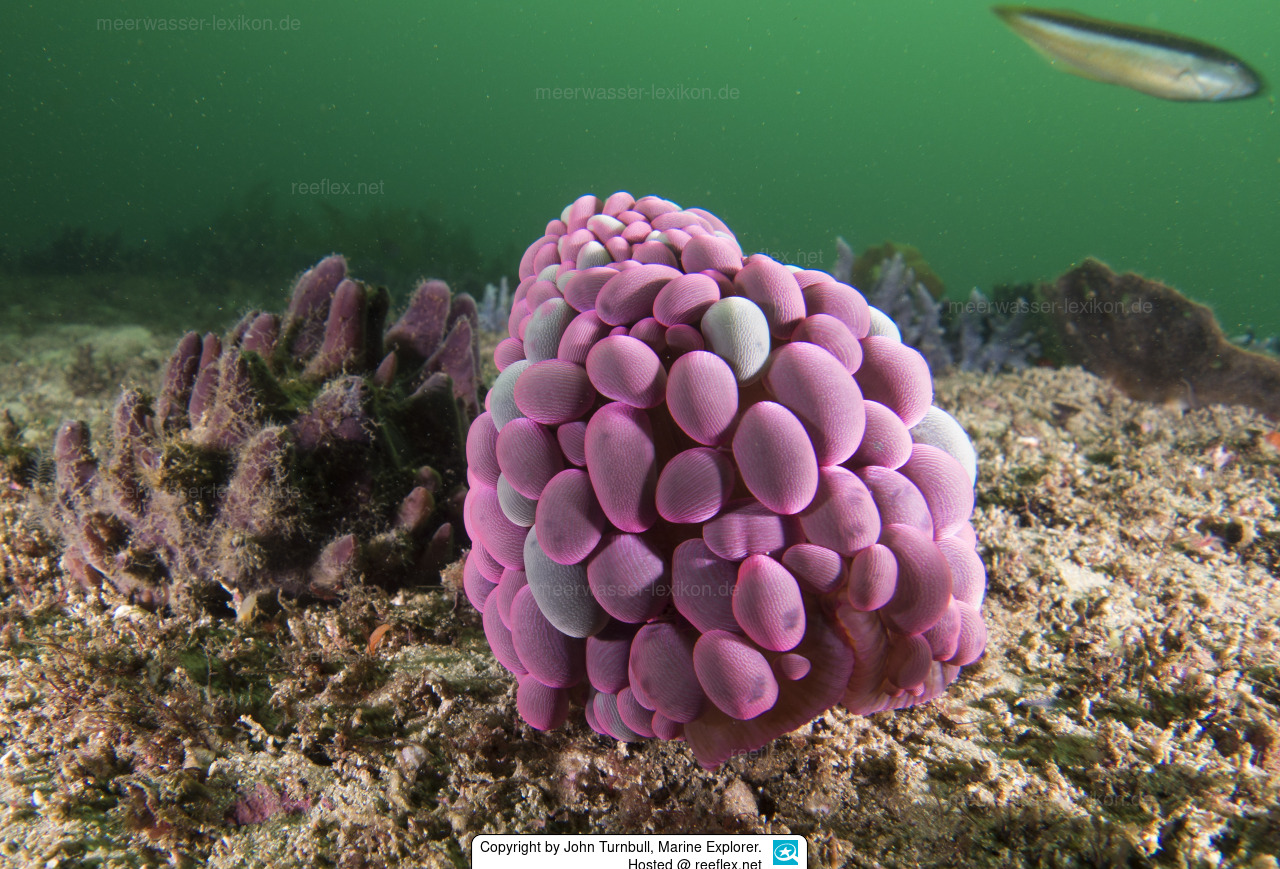Info
The wandering sea anemone is venomous and touching the tentacles can cause a painful sting. Swimmers are advised to avoid touching the sea anemone and to wear protective clothing.
Synonyms:
Actinia tuberculosa Quoy & Gaimard, 1833
Phlyctenactis retifera Stuckey, 1909







 Dr. John Turnbull, Marine Explorer, Australien
Dr. John Turnbull, Marine Explorer, Australien











